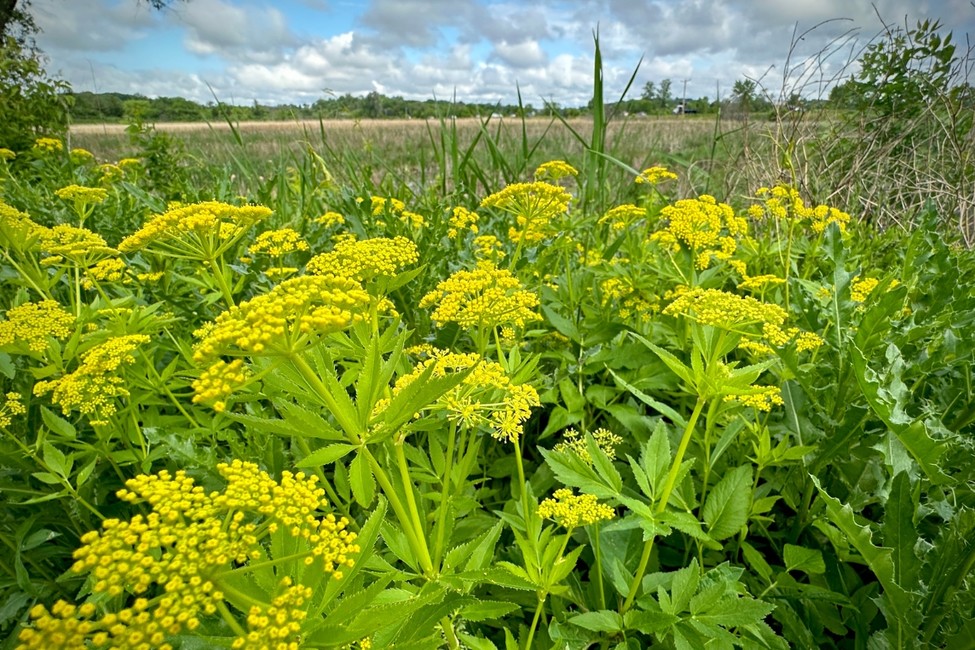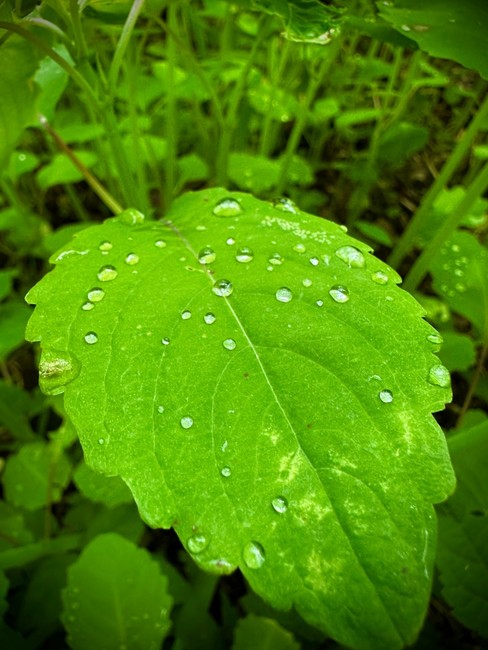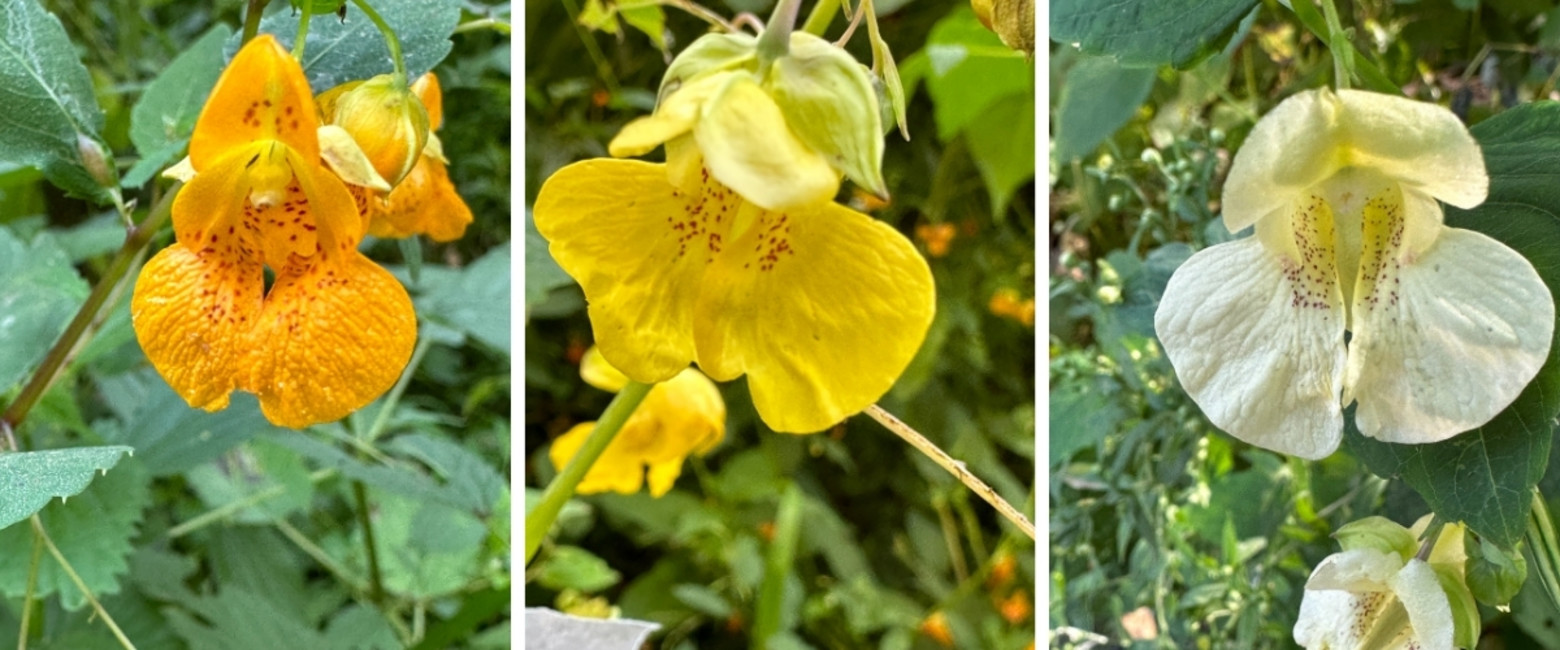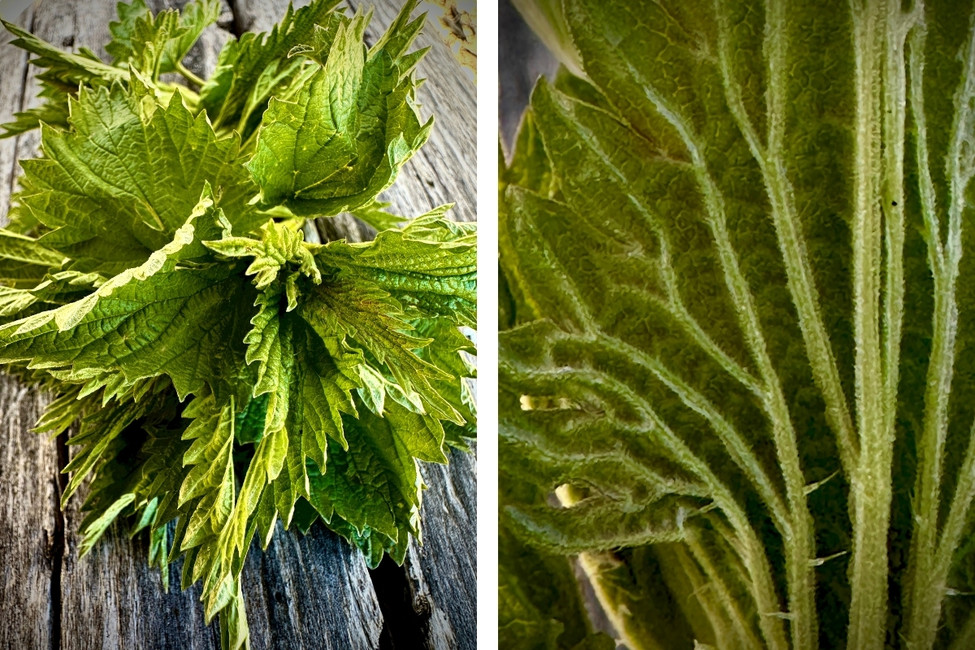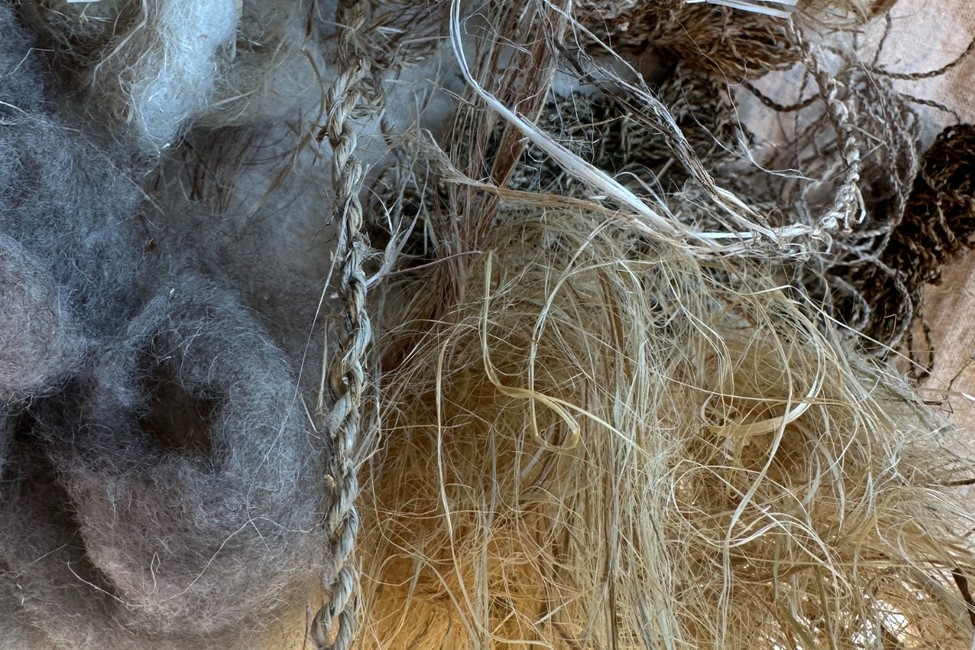Covering 86,943 square miles, Minnesota is a big state. Ecologically, it is divided into four distinct habitats called provinces. These provinces are geographic areas defined by climate, vegetation, soil and wildlife. In Minnesota, these provinces are divided into 10 sections and 26 subsections, and they are finely dissected further into soil types and plant communities.
At the Arboretum, these eco-sections become smaller and smaller as you walk through a mosaic of micro-habitats. Looking over the wetlands at the entrance of the Arboretum, a bright bunch of golden Alexanders cling to the slope away from the wetlands. Golden Alexanders like a bit of sun plus a bit of moisture. A slight shift in the landscape from very wet to moist makes a big difference.
Golden Alexander flowers form an umbel shape similar to other members of the carrot family, Apiaceae.
At the beginning of another wetland along Green Heron Trail is a giant cow parsnip, a member of the Apiaceae family, sharing the traits of hollow stems, fern-like leaves, umbel-shaped flowers and a preference for growing in moist soil. Some other members of this family include carrots, parsnips and celery and herbs dill, parsley and cilantro/coriander. Cow parsnip also grows along the edge of wetlands.
Cow parsnip towers over the wetland trail, growing 6-9 feet tall.
A wetland plant that has clever adaptations for a heavy moisture habitat is the native impatiens, jewelweed. Jewelweed leaves are a dusky blue-green, scalloped, very buoyant and water-repellant. Water will bead up on the leaves, creating little crystal jewels that give the plant its common name, jewelweed. It blooms in late summer, signaling the beginning of hummingbird migration.
Water-repellent jewelweed leaflets and leaves are designed to shed moisture.
There are two types of jewelweed: Spotted orange jewelweed and the less common pale yellow jewelweed, and both varieties are present in Arboretum’s many wetlands. The orange variety has a wide color range and variations in the number of spots. Pale yellow jewelweed is larger and sometimes looks almost white. The spots on the flower help guide pollinators, such as bumblebees and hummingbirds, to the flower.
All jewelweed flowers have guideline spots for pollinators.
The stems and leaves of jewelweed have clear sap that is soothing to minor skin rashes and also has anti-fungal properties. In wetlands or woods, when you see jewelweed, you will often find poison ivy and stinging nettle. Poison ivy contains an oil that is irritating to the skin and jewelweed can soothe the rash. Jewelweed can soothe the surface rash from stinging nettles, but stinging nettles go more than skin-deep.
Look closely at the back of an unfurling stinging nettle leaf for the tiny break-away barbs.
The nettle or needle contains a combination of acetylcholine, formic acid, histamine and serotonin that can remain in your system for up to 12 hours. Leaves, stems and even the flowers have barbs. Despite this stern warning about the sting of stinging nettles, they are also a highly valued potherb, a leafy plant grown for its culinary use.
The Forager Chef, Alan Bergo, invites readers to try a traditional Stinging Nettle soup, which is best made when nettles are 6-8 inches tall. Nettles can be blanched and frozen and used to add vitamins to soups and stews. Nettle tea, high in antioxidants, vitamins and minerals is available in the tea section of most grocery stores.
Stinging nettle is a bast fiber, with flexible, outer cell layers, similar to linen. The fiber runs the length of the long stems and can be harvested and prepared after seasonal frost. Traditionally, nettle was made into cordage and used for fishing nets by the Lakota and Ojibwe peoples of Minnesota. The nettle fibers in this photograph were prepared by fiber artist and storyteller, Fern Naomi Renville, of the Sisseton Wahpeton Oyate.
Nettle “wool” and cordage made from stem fibers of stinging nettles.
Virginia waterleaf appears in abundance in the spring but by mid-summer, it will disappear without a trace. The soft green leaf has light green markings that look like watermarks. Creeping wood sorrel is a non-native, but its charming presence is scattered along the Green Heron Trail.
The Arboretum’s wetlands hold many pieces of the landscape mosaic and create a wonderful diversity of plants and wildlife for visitors to learn from and enjoy.
Zan Tomko is an artist, horticulturist and a Minnesota Master Naturalist. More information about the program is available at www.minnesotamasternaturalist.org.
